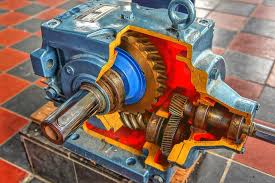Mobile:+86-311-808-126-83
Email:info@ydcastings.com
high pressure aluminum die casting
High Pressure Aluminum Die Casting An Overview
High pressure aluminum die casting is a manufacturing process that is widely utilized in various industries, including automotive, aerospace, electronics, and consumer goods. This technique allows for the creation of complex shapes and high-precision components, making it an essential process in modern manufacturing. This article explores the fundamentals of high pressure aluminum die casting, its benefits, applications, and future trends within the industry.
What is High Pressure Aluminum Die Casting?
In high pressure aluminum die casting, molten aluminum is forced into a mold cavity at high pressure. The process begins with the melting of aluminum alloys in a furnace until they reach a temperature between 660°C and 750°C. Once the aluminum is molten, it is injected into a steel mold, or die, that has been preheated to improve flow and reduce thermal shock.
There are two primary methods of injection hot chamber and cold chamber. The hot chamber method is generally used with lower melting point metals and involves the injection mechanism being immersed in the molten metal. In contrast, the cold chamber method requires the molten metal to be poured into a chamber before injection, making it suitable for aluminum and its alloys.
The pressure can reach up to 2000 bar, allowing for high-speed injection that fills the mold cavity rapidly. Once the aluminum solidifies, the die is opened, and the finished component is ejected. The entire process is remarkably efficient, with cycle times ranging from 15 to 60 seconds, depending on the complexity and size of the part.
Benefits of High Pressure Aluminum Die Casting
One of the primary advantages of high pressure aluminum die casting is the ability to produce lightweight yet strong components
. Aluminum's inherent properties, such as resistance to corrosion and excellent thermal conductivity, make it an ideal material for various applications. Furthermore, the process facilitates the production of complex geometries with tight tolerances, reducing the need for additional machining processes.Another benefit is the high production rate. The automation in die casting allows for mass production of identical parts, making it a cost-effective solution for manufacturing large quantities. This efficiency is particularly advantageous for industries such as automotive, where consistent quality and timing are crucial.
The process is also environmentally friendly. Unlike sand casting or other traditional methods that generate significant waste, high pressure die casting produces minimal scrap material. Additionally, aluminum is fully recyclable, adding sustainable value to products manufactured through this method.
high pressure aluminum die casting

Applications of High Pressure Aluminum Die Casting
High pressure aluminum die casting is used extensively across various sectors. In the automotive industry, components such as engine blocks, transmission cases, and structural parts benefit from aluminum’s lightweight properties, contributing to fuel efficiency and reduced emissions. The aerospace sector utilizes high pressure die casting for structural components that require a combination of strength and weight reduction.
Additionally, the electronics industry employs this method for producing housings and heat sinks, which require excellent thermal management properties. Consumer goods, including appliances and furniture, also make use of aluminum die casting for its aesthetic appeal and durability.
Future Trends in High Pressure Aluminum Die Casting
As the demand for lightweight materials continues to grow, the high pressure aluminum die casting industry is poised for significant advancements. Innovations in die casting technology, such as improved die materials, enhanced cooling techniques, and the integration of automation and robotics, are expected to increase production efficiency and product quality.
Moreover, the rise of electric vehicles (EVs) underscores the potential for aluminum die casting. EV manufacturers are seeking ways to reduce vehicle weight to enhance performance and range, making aluminum die casting an attractive solution.
Furthermore, advancements in additive manufacturing and 3D printing are opening new avenues for producing molds and components, allowing for even greater complexity and customization in design.
Conclusion
High pressure aluminum die casting is a vital process that combines efficiency, precision, and sustainability in modern manufacturing. Its benefits make it a preferred choice in multiple industries, particularly as the push for lightweight materials intensifies. With continued innovations and the emergence of new applications, the future of high pressure aluminum die casting looks promising, offering exciting possibilities for manufacturers and consumers alike.
-
Why Should You Invest in Superior Pump Castings for Your Equipment?NewsJun.09,2025
-
Unlock Performance Potential with Stainless Impellers and Aluminum End CapsNewsJun.09,2025
-
Revolutionize Your Machinery with Superior Cast Iron and Aluminum ComponentsNewsJun.09,2025
-
Revolutionize Fluid Dynamics with Premium Pump ComponentsNewsJun.09,2025
-
Optimizing Industrial Systems with Essential Valve ComponentsNewsJun.09,2025
-
Elevate Grid Efficiency with High-Precision Power CastingsNewsJun.09,2025











